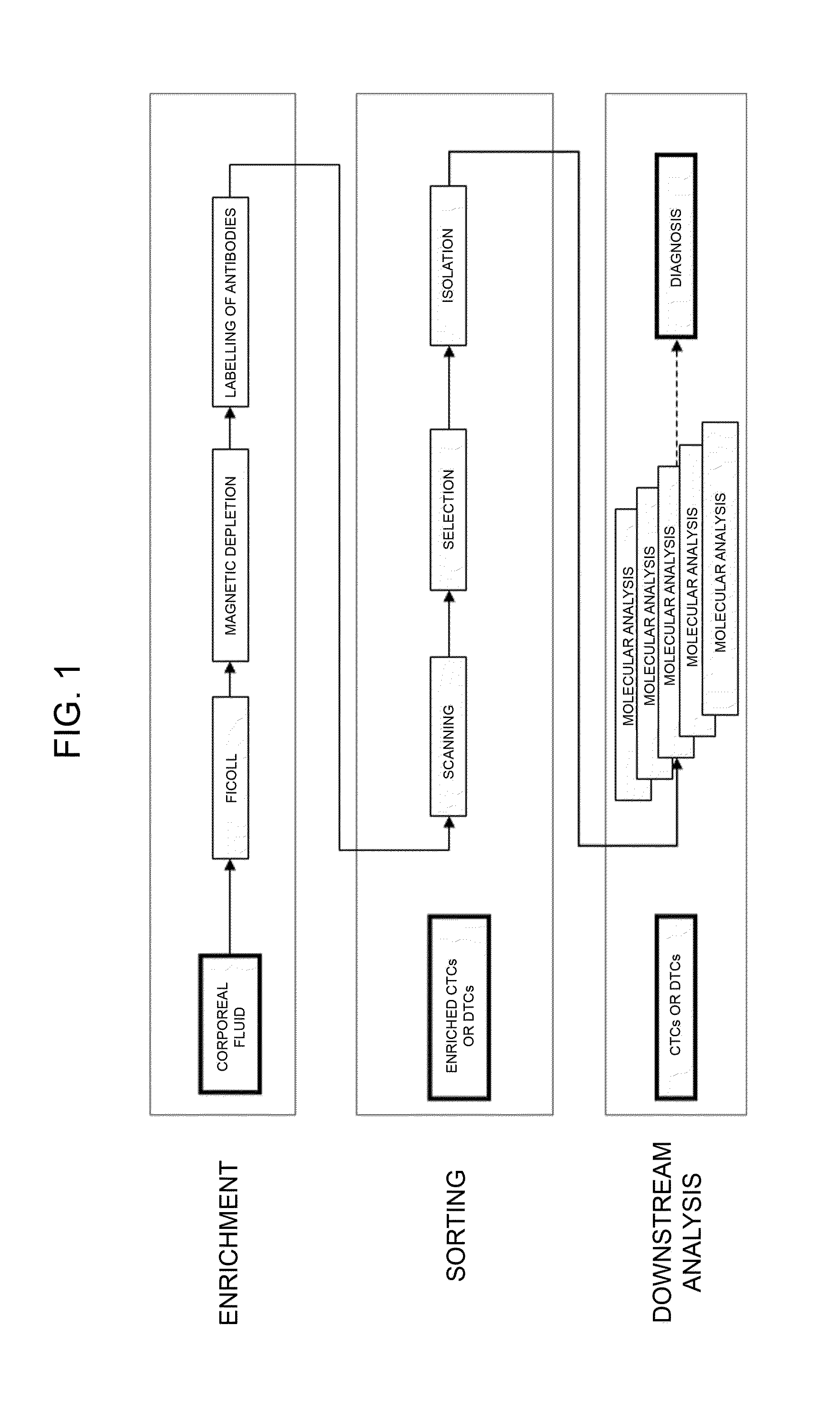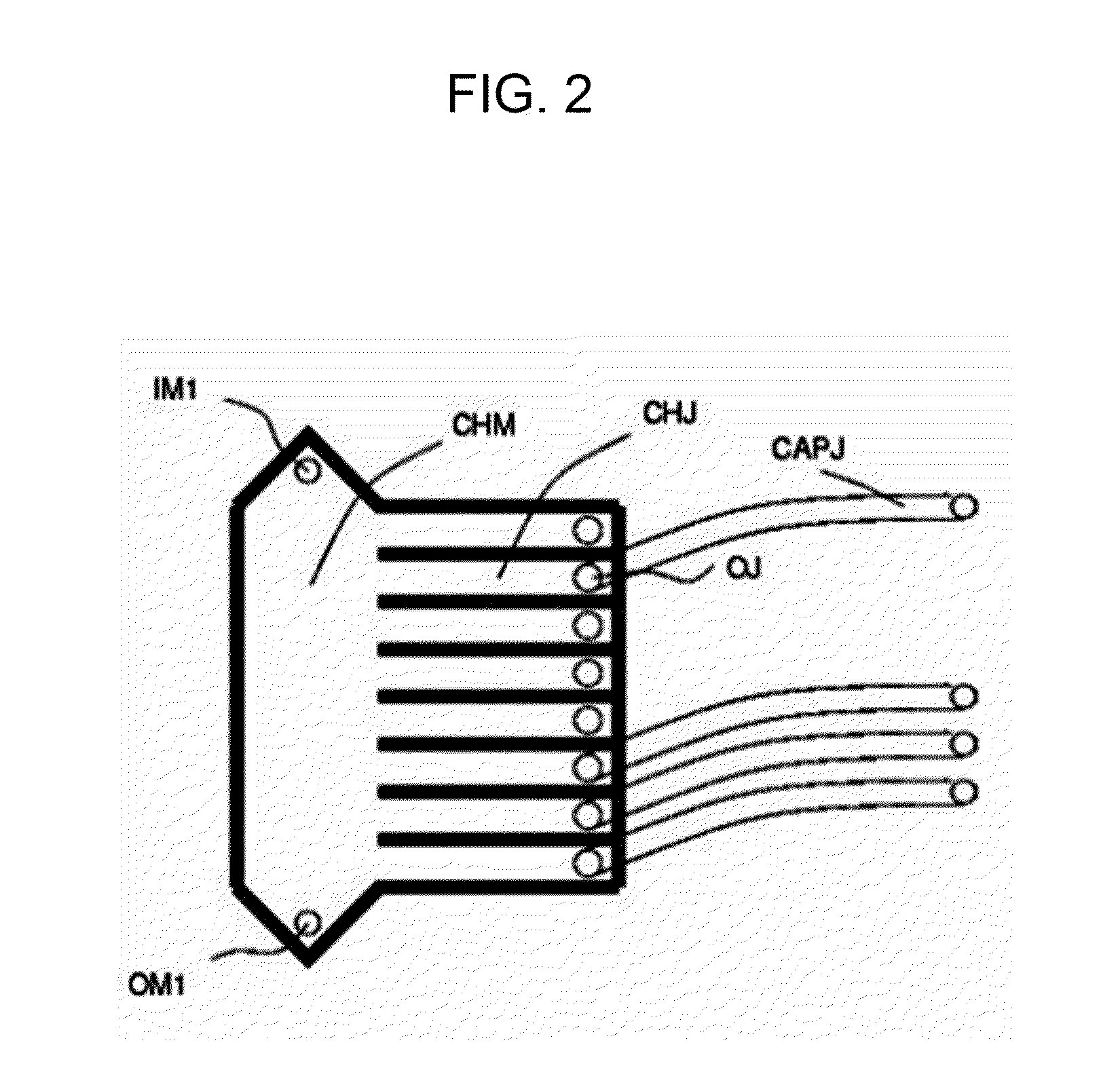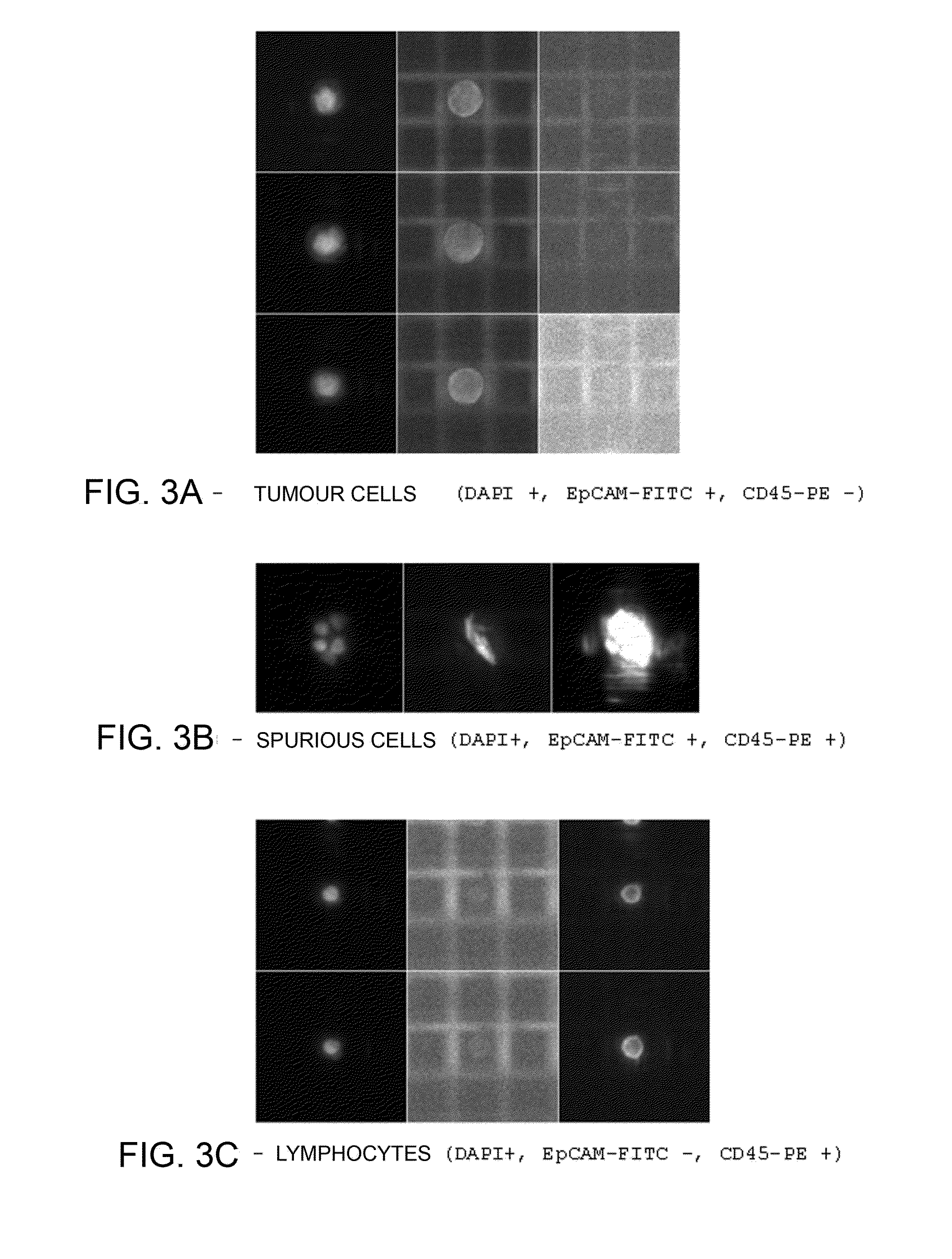Method for Identification, Selection and Analysis of Tumour Cells
a tumour cell and selection technology, applied in the field of tumour cell identification, selection and analysis, can solve the problems of low sensitivity and specificity, widespread dosage of psa, poor sensitivity and specificity, and non-negligible costs for the health system, etc., to achieve high diagnostic and predictive reliability, high purity, and high accuracy.
- Summary
- Abstract
- Description
- Claims
- Application Information
AI Technical Summary
Benefits of technology
Problems solved by technology
Method used
Image
Examples
first embodiment
Circulating Tumour Cells or Disseminated Tumour Cells
Sampling
[0086]The samples can be taken from the peripheral circulation of the patient, or else from bone marrow through various techniques known in the sector.
Pre-Enrichment
[0087]The proportion of tumour cells in the sample taken can be enriched using various methods, such as for example: centrifugation on density gradient, constituted by solutions such as Ficoll or Percoll; mechanical enrichment, such as filters of various types; enrichment by means of separation by dielectrophoresis via a purposely provided device—dielectrophoretic-activated cell sorter (DACS); selective lysis, such as for example, selective lysis of erythrocytes not of interest; immunomagnetic separation, via immunomagnetic beads with positive selection (using beads bound to specific antibodies for the population to be recovered) or with negative selection (depletion of cell populations that are not of interest), and in which the two types of selection can be c...
second embodiment
Formalin-Fixed-paraffin Embedded Samples
Sampling
[0109]The samples are formalin-fixed and paraffin-embedded samples routinely used and prepared by known methodologies.
[0110]The samples are deparaffinised and cells are dissociated with a 1% dispase / 1% collagenase solution so as to obtain a cell suspension in a fluid which includes tumour cells and stromal cells. The methodology employed is known from Corver W E et al. (J Pathol, 206, 233-241 (2005).
[0111]Isolation of single tumour cells (common to both embodiments)
[0112]Next, the sample containing the tumour cells is inserted in a microfluidic device that is able to select individually single cells and isolate them in an automatic or semi-automatic non-manual way. For this purpose, it is possible to use a dielectrophoretic isolation (DEPArray, using for example, the techniques described in PCT / IB2007 / 000963 or in PCT / IB2007 / 000751, or again in Manaresi et al., IEEE J. Solid-State Circuits, 38, 2297-2305 (2003) and in ...
example 1
[0182]Non-invasive evaluation of mutations (for example, in the K-RAS gene) in cancer patients.
[0183]Described in what follows is the case of isolation of CTCs from peripheral bloodflow of patients affected by metastatic Colon-Rectal Cancer (mCRC).
[0184]A specimen of 7.5 ml of peripheral bloodflow was drawn from the patient in Vacutainer tubes with EDTA anticoagulant (Beckton Dickinson). The specimen was analysed with Coulter Counter (Beckman Coulter) and presented 42×106 leukocytes (WBCs) and 43.95×109 erythrocytes (RBCs). The PBMCs were then isolated via centrifugation (in Ficoll 1077). The PBMCs recovered (16.5×106 on the basis of the count with Coulter Counter) were washed in PBS with BSA and EDTA (Running Buffer, Miltenyi) and were selected via depletion with magnetic microbeads conjugated to anti-CD45 and anti-GPA antibodies (Miltenyi) according to the instructions of the manufacturer. The resulting cells (negative fraction for CD45 and GPA) were fixated with 2% PFA in PBS for...
PUM
| Property | Measurement | Unit |
|---|---|---|
| volume | aaaaa | aaaaa |
| purity | aaaaa | aaaaa |
| fluorescence images | aaaaa | aaaaa |
Abstract
Description
Claims
Application Information
 Login to View More
Login to View More - R&D
- Intellectual Property
- Life Sciences
- Materials
- Tech Scout
- Unparalleled Data Quality
- Higher Quality Content
- 60% Fewer Hallucinations
Browse by: Latest US Patents, China's latest patents, Technical Efficacy Thesaurus, Application Domain, Technology Topic, Popular Technical Reports.
© 2025 PatSnap. All rights reserved.Legal|Privacy policy|Modern Slavery Act Transparency Statement|Sitemap|About US| Contact US: help@patsnap.com



